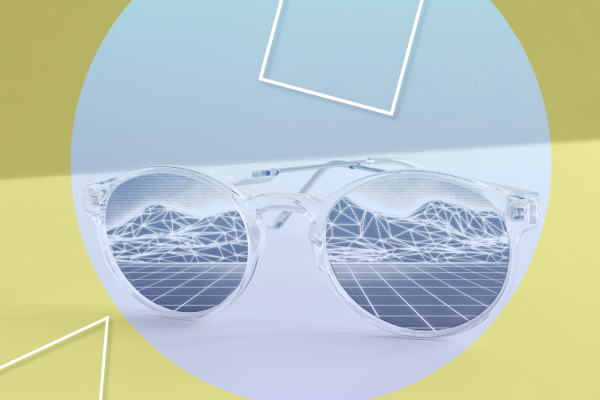
Close your eyes. Think of a topic that is important to you and imagine that you are in 2040. What would that future look like?
“By 2040, we will have succeeded in making society completely fossil-free. The countries of the world finally realised what had to be done and took responsibility. In Sweden, investments in fossil-free steel and cement have also led to changes in the way we build and develop cities and communities. Biodiversity has been strengthened, both in cities and in rural areas. Forests are cared for and used in a sustainable way. We continue to drive, but without emissions and with reduced impact on nature and people. But it is not completely free of problems. Car accidents, congestion, road wear and more continue to be a burden. Health issues do only slowly get better. Joint action by the countries around the Baltic Sea is finally having an impact and we look to the future with some confidence.”
Story about the future shared by a citizen of Europe on #OurFutures
We invited people across the EU to share their imagined futures. For this collection we, the European Commission’s Competence Centre on Foresight, used a narrative inquiry method. Instead of asking opinions about the future, we asked participants to share a story about their desirable future, followed by a few questions about that story, in order to more fully comprehend their thinking. In this process we were guided by Voices That Count.
In this article, we’ll take a look at the first 591 stories of people that participated so far, mostly from Greece and Slovenia, followed by Germany, Spain and Italy. Approximately half of them are students, and the other half mainly consists of employed people.
What are the key insights we gain from people’s #OurFutures stories?
What are people's hopes, concerns and ideas for our future in Europe and beyond? We will highlight some of the most interesting findings. They shall inspire you to help build the future of Europe. You might be a curious individual, researcher, entrepreneur or policymaker: all contribute to shape the future.
High hopes and high concerns for the future of our planet
The overwhelming majority of the participants are hopeful and inspired by the future images they shared, and positive feelings are mostly associated to stories about nature, fairness and well-being. Interestingly enough, these topics are also leading the minority of less positive stories.
More than 40% of the participants talk about climate and nature issues. They imagine greener cities and a circular economy, show attention to the need to preserve biodiversity, to pursue more sustainable mobility etc. When people talk about caring for each other or health issues, they very often give it an environmental flavour: our health depends on the health of planet Earth and the need to protect it.
“Seventeen years from now, I would like the world to be […] a place where everything is in balance, especially the climate. Seventeen years from now I would like to see diesel or petrol cars abolished, factory emissions reduced and nature and greenery allowed to enter cities more efficiently. I would like the pavements to be cultivated, so as to support 0-impact mobility, and I would also like all houses to have an A grade or higher, so as to preserve the environment.”
Participants do not believe that their future will happen by itself. It will take strengthening human connections, relationships, communication and empathy. In addition, the need for a stronger connection with nature and with the local context emerge from the stories.
Even though their images are mostly positive, respondents are quite concerned about the future. They show a rather pessimistic view of our ability to tackle climate-related and other environmental challenges: often the future they describe is seen as only possible in a utopian world. They especially express concern, powerlessness and fear when their stories are less about the future and more about a depiction of our current times.
“The golden age is over. With inevitable climate change a centuries long age of decline has begun.” ”There is essentially no hope for our future on this planet.”
Generally, though, the younger generation shares optimistic stories about the environment and the future of the planet, and believe that their perception will happen. Their images talk about de-growth, sustainable lifestyles, less individualism and more attention to the relationships among communities.
“One of the most important changes I would like to see in the future has to do with our energy consumption and production. It is vital that we switch to renewable sources of energy soon, as it is severely harmful to the environment.”
However, they seem to believe less in their own ability to shape that future in comparison to other age groups.
Social issues: what is included and what is absent in the stories?
Social dimensions are very much present in the images of the respondents - especially in those shared by women. Many stories mention a strong wish for a world without any discrimination based on gender, colour, and sexual orientation, and a fair Europe in which everyone has access to the same opportunities regardless of their background.
“I wish that minorities will no longer be singled out, but that it will become normal for them to have respectable positions in society.”
The strong focus on zero discrimination, social justice and solidarity, is also present in the few future images related to migration. Only 6% of the people connect their story to ‘migration’, and in those few stories that do talk about refugees, the topic is generally taken up from a positive stand: a plea for open borders, the need to care for migrants, and the wish to fully include them in the socio-economic space.
“In my vision of an ideal 2040, freedom of movement should be open to all - not a headache for those who need to flee or a utopia for those who cannot afford it.”
“Climate refugees will be welcomed and integrated in the villages and co-living projects.”
An overall desire for more economic well-being for everyone is common in stories related to the economy, and ‘work’ doesn’t seem to be top of mind when thinking about the future: very few people (only 8%) tagged their stories as related to ‘work/occupation’. This might also have to do with the fact that financially insecure, unemployed (and retired) people are at the moment underrepresented in this exercise.
Politicians, business people and citizens together can make a better future happen – but citizens see themselves acting first
The future is shaped by today’s actions. But who are the people that need to act to realise these desirable futures?
The majority of contributors feel that government leaders, business people, scientists and citizens will need to work together to make the change happen. A clear trend, however, shows how important citizens or citizen groups are as changemakers. This pattern remains the same no matter what age group. Consequently, people feel that their own role in creating their future is quite substantial. Especially people that connect a positive feeling to their story believe in their ability to co-create their imagined future.
“Surrounded with a community of people who have positive attitude to make the society better. Be a conscious global citizen and sustainable life style (SDGS#12), intergenerational community, less spiritual-material divide, simple life style”
Strong belief in technology and science
For people that are confident about the achievability of their future, technology plays a crucial role. Science and technology will help to find solutions to the major challenges of our world: it will enable economic well-being and high-quality life for everyone while protecting the environment. It will solve current challenges or strengthen new pathways in different sectors (communication, transport, employment, medicine, etc.).
Technology enjoys a very positive and optimistic flavour, especially when it comes to healthcare (Covid-19 was still very much present at the start of the story collection): it can enable more advanced surgeries and treatments for incurable diseases, further increasing life expectancy.
Reading the stories in which ‘business people & scientists’ were seen as crucial to making that future happen, digitisation at all levels is the top topic. There seems to be a big hope in a high-tech future, ranging from technologies that attempt to divert climate change to the complete digitisation of our society, in which robots replace almost everything.
“I see a future where people live in two domains, the physical and the metaverse. The metaverse will have much more relevance in the future. In some occasions, it will have prevalence regarding the physical world. The interplay between AI, Virtual Reality, Metaverse, Augmented reality will bring a new dimension in human life, even in longevity. Regarding the longevity, some of us will life as an avatar in a metaverse enabled by several companies that provide that service.”
Some other stories describe how technology will affect daily life.
“Superfast internet will make it possible to visit other countries staying at home in virtual reality.”
“With the development of technology, many things have changed in our lives. People are now lazier because of this. They are lazier to do things and this affects the life of the whole world.”
The increased presence of technology in our lives is seen as a negative evolution only in a few stories. Single cases describe how applications might take control over our societies and evolve towards a totalitarian state.
The relevance of local communities
The majority of respondents (more than 60%) consider their future images influenced by worldwide challenges, while European issues play a role in every sixth contribution. This corresponds with the high focus on climate change and global justice reflected in the stories, and, as the word ‘war’ is present in 49 stories, undoubtedly the war in Ukraine also influenced people's future thinking.
National and local challenges each are considered to influence the future image only in every tenth story; however, community action at the local level is seen as the key driver to actively shape the future in nearly one third of the stories.
Contributors see a significant role for themselves in strengthening human connections, creating better relationships in their neighbourhoods, or call for more empathy towards those who are seen as ‘different’ (in terms of ethnic background, gender, etc.).
“I would like to see as many people as possible volunteering to help individuals in their community. E.g. helping the elderly and the disabled with grocery deliveries, transport. Helping children to learn, volunteering in schools to help with sports and other activities organised by the school, etc.”
A closer connection with nature is also reflected in local stories: from the need to change personal behaviours, to changes surroundings as through urban planning.
A small but still substantial number of stories talks about young people’s very personal concerns related to housing, finding a job, and having a pension.
“It's no secret that the younger generation has been dealt a tough hand.”
“In the future, I would like everyone to be able to live in as little deprivation as possible; or for young people to be able to live as normally as possible; or to make the transition from adolescence to adulthood without major deprivation. By this I mean, above all, making it easier to become independent or to start life on one's own, where the housing would be reasonably priced or the rent would not be too high, and would enable the individual to live more easily and save money.”
General concern without losing hope?
Although 70% of the people associate the image of their future with only positive feelings, people are clearly concerned about the future: 50% of the respondents have indicated high levels of concern.
Still, their concern is not hopeless: a lot seems to be possible at local level if people act together, with technology as an ally.
In the perspective offered by the stories collected, the challenge for decision makers and for policy makers becomes to enable a collaborative exchange among businesses, policymakers and citizens. Their combined efforts are in fact crucial to enable the overwhelming majority of positive societal and environmental scenarios shared in this exercise.
#OurFutures is an open-data base, designed by the Competence Centre of Foresight of the Joint Research Centre of the European Commission, to inspire a collective dialogue about the future of Europe. More information on #OurFutures
Analysis report compiled by Voices that Count October 2022
The first Futures Stories (591) were collected from 1 June 2021 till 30 May 2022 (start-up phase of the project). For more information, check out our full report or open database
Featured image by Max Petrunin on Unsplash
Details
- Publication date
- 9 May 2023
- Author
- Joint Research Centre
- EU Policy Lab tags
- Foresight
- #OURFUTURES




